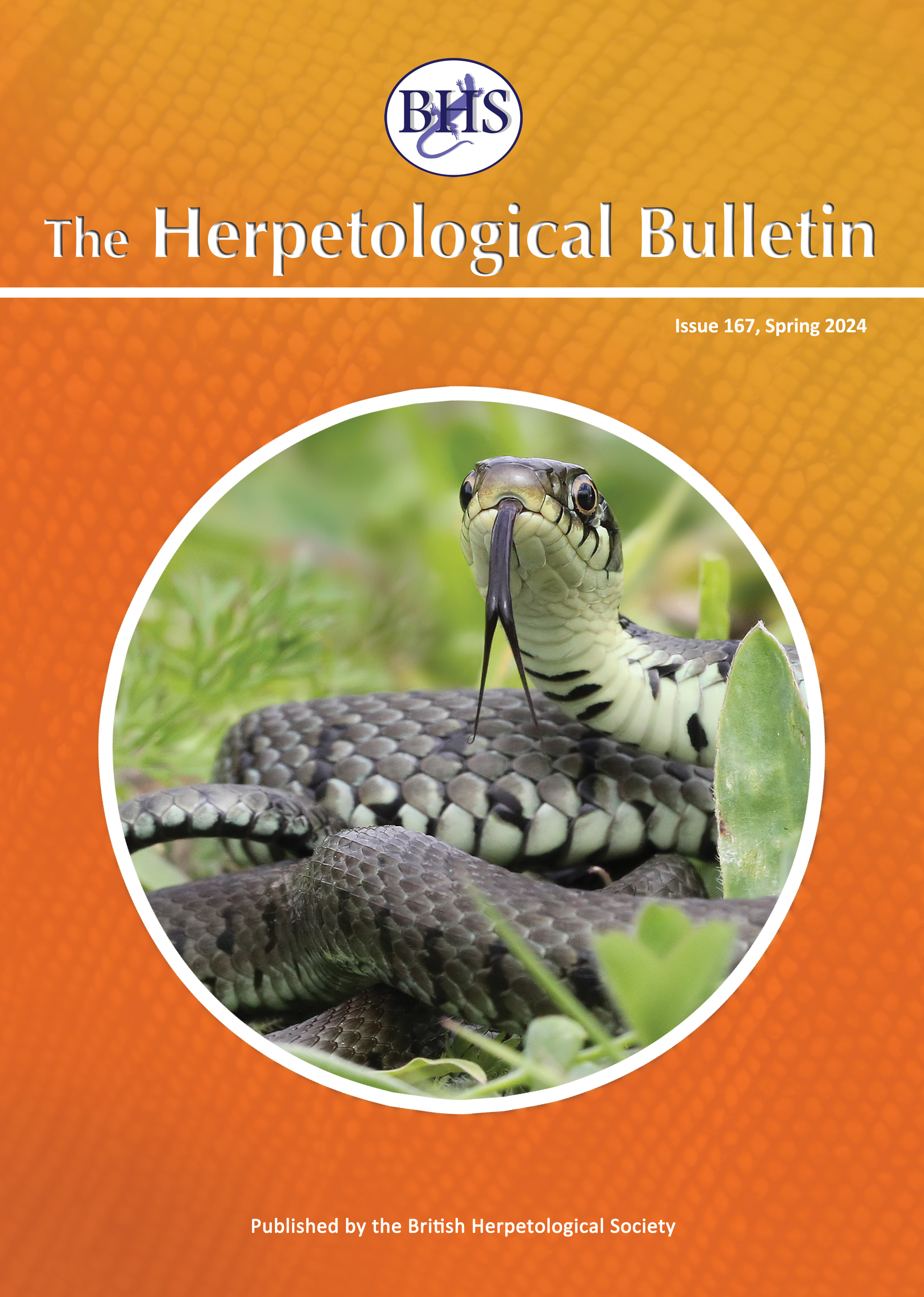
The Herpetological Bulletin
The Herpetological Bulletin is a quarterly publication in English. It includes full-length papers, natural history notes, book reviews, and other items of general herpetological interest. Emphasis is placed on natural history and conservation as well as captive care that includes breeding, husbandry, veterinary, and behavioural aspects.
pdf 01. Effects of different heat and light sources on the behaviour of captive reptiles
472 downloads
Open Access
AUTHORS: DANIEL KANE, HAILEY STAPLETON, THOMAS GRIFFITHS & CHRISTOPHER J. MICHAELS
ABSTRACT: Reptiles are sensitive to electromagnetic radiation at wavelengths between the ultra-violet and infrared bands. Husbandry practitioners designing artificial lighting arrays should aim to provide spectra that approximate those to which a given species has become adapted in nature. This would satisfy biological needs ranging from thermoregulation and vitamin D3 photobiosynthesis to vision and communication. We evaluated the spectral outputs of two artificial lighting arrays (A & B) in their ability to provide this. Array A was designed to replicate those used as standard over the last decade in many controlled environments, while the Array B was intended to provide a more solar-like output. We measured behaviour and calculated a modified Spread of Participation Index (mSPI) for three species of reptile (turtle, lizard and snake) as the arrays were alternated in an A-B-A design (in observation periods 1, 2 and 3). Data were analysed using randomisation to deal with small sample size and repeated measures. Although in theory Array B provided a better spectrum than Array A, there were no clear patterns where behaviour and mSPI shifted going from Array A to B then reverted when going from Array B to A. However, the lizard and turtle both showed unexplained behavioural shifts, and the lizard an associated mSPI shift, when going from Array B to A. Our results demonstrate the power of combination lighting arrays to better approximate solar spectra, but also that behavioural observations may not reflect theoretical implications. We suggest reasons for this and directions for future research.

